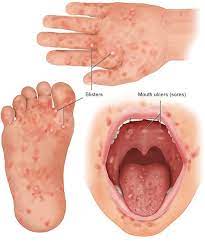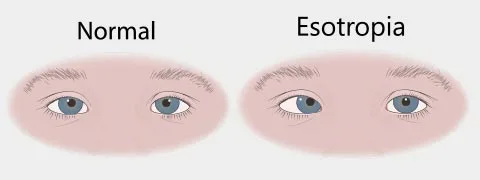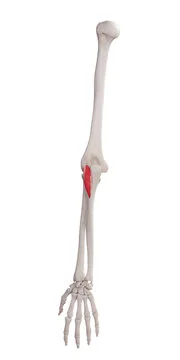Hand, Foot, and Mouth Disease
What is a Hand, Foot, and Mouth Disease?
Hand, Foot, and Mouth Disease (HFMD) is a highly contagious viral illness commonly affecting infants and children under the age of 5, although it can occasionally occur in older children and adults. The disease is characterized by a distinctive rash on the hands and feet, and sores in the mouth.
It is typically caused by the Coxsackie virus, most frequently the Coxsackievirus A16, and sometimes by enterovirus. HFMD is spread through direct contact with the nasal discharge, saliva, blister fluid, and feces of an infected person. While the illness is generally mild and self-limiting, it can lead to complications in some cases, such as viral meningitis or encephalitis.
Although no specific treatment is available for HFMD, managing symptoms and preventing its spread through proper hygiene and sanitation are crucial. Understanding the symptoms and modes of transmission is vital in effectively containing outbreaks and preventing its spread within communities, especially among vulnerable populations.
Your child’s risk of infection may be reduced by often washing their hands and avoiding close contact with those who have hand-foot-and-mouth disease.
Epidemiology
While hand, foot, and mouth disease can affect adults with different symptoms, it primarily affects children under the age of 10 and more frequently under the age of 5. It usually breaks out in the spring, summer, and fall seasons.
This is thought to be caused by improved spread brought on by heat and humidity. Although HFMD is more prevalent in rural than in urban regions, socioeconomic conditions and degree of hygiene must be taken into account. One risk factor for HFMD is poor hygiene.
Symptoms
The following symptoms may be present in all cases of hand, foot, and mouth disease, or only in some. They consist of:
- A fever.
- tender throat.
- feeling unwell.
- On the tongue, gums, and inside the cheeks, there are painful, blister-like sores.
- A rash that sometimes affects the buttocks, soles, and palms.
- The rash occasionally develops blisters but is not irritating.
- The rash can seem red, white, gray, or just as little pimples, depending on the tone of the skin.
- fussiness in young children.
- decrease in appetite.
- On the palms of the hands, hand-foot-and-mouth disease frequently results in a rash of excruciating blister-like sores. The appearance of rashes varies with skin tone.
- Foot rash brought on by hand, foot, and mouth illness
- On the soles of the feet, hand, foot, and mouth disease frequently results in a rash of excruciating blister-like sores. The appearance of rashes varies with skin tone.
- Typically, the incubation period (the time between the first infection and the onset of symptoms) lasts three to six days. Youngsters may experience fever and sore throats.
- They sometimes experience discomfort and a decrease in their desire to eat.
- Painful sores at the front of the mouth or throat can present one or two days after the fever starts. There can also be a rash on the hands, feet, and occasionally the buttocks.
- Back of the mouth and throat sores can be an indication of herpangina, a similar viral infection.
- A sharply elevated temperature and, in certain cases, seizures are further symptoms of herpangina. Rarely, do sores on the hands, feet, or other body parts appear.
Causes
The most frequent cause of hand, foot, and mouth illness is coxsackievirus infection. The coxsackievirus is a member of the nonpolio enterovirus family of viruses. Hand, foot, and mouth illnesses can also be brought on by other kinds of enteroviruses.
The majority of cases of hand, foot, and mouth disease and coxsackievirus infection are acquired by oral contact. Person-to-person contact with an infected individual is how the infection is transmitted:
- discharge from the throat or nose
- Blister fluid, saliva, and stool
- respiratory droplets that shoot into the atmosphere during a sneeze or cough
- Typical in daycare environments
- Childcare facilities are the primary source of hand, foot, and mouth disease cases.
- This is because small children require assistance using the toilet and frequent diaper changes.
- Additionally, they frequently put their hands in their mouths.
- During the first week of having hand, foot, and mouth disease, your child is most contagious.
- However, the virus can stay in the body for several weeks even after the symptoms go away. This implies that your youngster is still contagious.
- Adults in particular might transfer the virus to others without displaying any illness symptoms.
- Throughout the US, outbreaks of the disease are more frequent throughout the summer and early fall.
- In tropical regions, epidemics happen in the rainy season.
- As opposed to foot-and-mouth disease
- The contagious viral disease known as foot-and-mouth disease (sometimes referred to as hoof-and-mouth disease) that affects agricultural animals is unrelated to hand-foot-and-mouth disease.
- The hand, foot, and mouth illness cannot be contracted from pets or other animals, nor can it be transmitted to them.
Risk factors
The first and foremost risk factor for hand, foot, and mouth disease is age. Children under the ages of five to seven are primarily affected by the condition. Since the virus spreads through person-to-person contact, children in childcare facilities are particularly at risk.
Although it usually affects small children, anyone can contract hand, foot, and mouth disease.
It is believed that older adults and children are immune to hand, foot, and mouth disease. After being exposed to the disease-causing viruses, they generally create antibodies. However, hand, foot, and mouth disease can still strike adults and teenagers.
Transmission
HFMD is extremely contagious and can spread by direct contact, fecal–oral transfer, or nasopharyngeal secretions like saliva or nasal mucus. Days to weeks after the symptoms go away, you could still be contagious.
Because kids frequently put their hands in their mouths, are toilet trained, and change their diapers frequently, childcare facilities are the most typical places where HFMD is acquired. Secretions from the nose and throat, including saliva, sputum, nasal mucus, blister fluid, and feces, can cause HFMD.
Complications
Dehydration is the most frequent side effect of hand, foot, and mouth illness. It may be painful to swallow due to ulcers in the mouth and throat caused by the sickness.
When your child is sick, could you encourage them to stay hydrated? Children may require intravenous (IV) fluids in the hospital if they become extremely dehydrated.
Typically, hand, foot, and mouth disease is a mild condition. Usually, it just lasts a few days and results in a temperature and minor symptoms. The enterovirus that causes hand, foot, and mouth disease can occasionally penetrate the brain and result in dangerous side effects:
A rare infection and inflammation of the meninges and cerebrospinal fluid around the brain and spinal cord is known as viral meningitis.
Encephalitis: This serious illness that can be fatal involves inflammation of the brain. Rare is encephalitis.
Diagnosis
HFMD is frequently diagnosed via a physical examination conducted by a clinician. They will examine your mouth and body for rashes and blisters. The doctor may also inquire about further complaints from you or your child.
To check for the virus, the physician might collect a stool sample or a throat swab. They will be able to validate the diagnosis as a result.
Treatment
Without medical intervention, the illness usually clears up in seven to ten days. But, in order to help manage symptoms until the illness has taken its course, your doctor can suggest some therapies. These may consist of:
Topical creams (prescription or over-the-counter) to treat blisters and rashes; painkillers (acetaminophen or ibuprofen) to treat headaches.
Medicinal lozenges or syrups to relieve excruciating sore throats
Giving aspirin to children for viral infections is not recommended. Children who take aspirin are more prone to Reye’s syndrome.
Home treatments for oral, podiatric, and hand diseases
The symptoms of HFMD may also be relieved by some at-home therapies. The following natural cures for blisters may help them become less uncomfortable:
- Eating ice cream or sherbet, sucking on ice chips or popsicles, consuming cold beverages, avoiding citrus fruits, fruit drinks, and soda, and avoiding spicy or salty foods.
- The discomfort brought on by mouth blisters and throat sores may also be reduced by swishing warm salt water around in your mouth.
- A person may do this several times a day or as often as needed.
Prevention
Sanitize the hands
Often wash the hands for at least 20 seconds using soap and water. Utilize an alcohol-based hand sanitizer in the absence of soap and water.
Always give yourself a wash:
- following a diaper change.
- following a bathroom visit.
- following a sneeze, cough, or blow of the nose.
- both prior to and following medical care.
- Encourage kids to wash their hands. Make sure they wash their hands frequently and teach them how to do so. Assist them in protecting blisters and refrain from touching them.
Get more information about family handwashing-
Steer clear of individuals who are unwell.
Refrain from giving someone who has HFMD a hug or a kiss.
If my child is ill, may they go back to school?
Since HFMD is often moderate, kids can stay in daycare centers and attend school as long as they:
- possess no fever.
- Avoid excessive drooling when you have mouth sores.
- Feel sufficiently good to engage in class activities.
- If you are still unsure about when it is appropriate for your kid to return, speak with their healthcare physician.
- To contain an outbreak, the local health agency may occasionally mandate that kids with HFMD stay at home.
- Refrain from touching the lips, nose, or eyes.
- If you have the virus on your hands and then come into contact with your mouth, nose, or eyes, you could get HFMD.
- Avoid touching your lips, nose, or eyes with unwashed hands to lower your risk of illness.
Clean and disinfect
Toys and doorknobs are among the shared items that should be cleaned and disinfected periodically.
Conclusion
In conclusion, Hand, Foot, and Mouth Disease (HFMD) poses a significant public health concern, particularly for young children and those with weakened immune systems. While the illness is generally self-limiting and mild, its highly contagious nature can lead to widespread outbreaks, especially in settings where people are in close contact, such as schools and daycare centers.
Effective prevention strategies, including maintaining good personal hygiene, disinfecting contaminated surfaces, and avoiding close contact with infected individuals, are crucial in limiting the spread of the disease. While no specific antiviral treatment exists for HFMD, supportive care, such as ensuring hydration and managing symptoms, can help alleviate discomfort and promote recovery.
FAQ
What is hand, foot, and mouth disease’s primary cause?
The viruses that cause HFMD are members of the enterovirus family: In the US, coxsackievirus A16 is usually the most common cause of HFMD. The sickness can also be brought on by other coxsackieviruses. HFMD can also be brought on by coxsackievirus A6, albeit the symptoms might be more severe.
What is the duration of hand-foot-mouth disease?
Although it can affect older children and adults as well, it is most common in young children, especially those under the age of ten. Although hand, foot, and mouth disease might be uncomfortable, it normally goes away on its own in seven to ten days. Most of the time, you can take care of your child or yourself at home.
To what extent is the disease hand, foot, and mouth?
Although very contagious, the sickness is typically not dangerous. In daycare facilities and schools, it can spread swiftly. The illness hand, foot, and mouth spread quickly. Fever, oral sores, skin rash, and other symptoms are possible.
Can you cough from hand to foot mouth?
a fever—a high temperature, typically between 38°C and 39°C (100.4–102.2°F)—and an overall feeling of being sick. decrease in appetite. hacking.
How can I stop the itching in my mouth, hands, and feet?
Blister pain, fever, and sore throat can all be lessened with acetaminophen and ibuprofen. Ice packs could be helpful if blisters on the palms of the hands and soles of the feet are related to burning. Benadryl may also assist in reducing blister-related burning or itching.
References
- Hand-foot-and-mouth disease – Symptoms & causes – Mayo Clinic. (2022, August 16). Mayo Clinic. https://www.mayoclinic.org/diseases-conditions/hand-foot-and-mouth-disease/symptoms-causes/syc-20353035
- Prevent hand, foot, and mouth disease. (2023, May 11). Centers for Disease Control and Prevention. https://www.cdc.gov/hand-foot-mouth/about/prevention.html
- Selner, M. (2023, February 13). What is Hand, Foot, and Mouth Disease (HFMD)? Healthline. https://www.healthline.com/health/hand-foot-mouth-disease#causes
- Wikipedia contributors. (2023, October 30). Hand, foot, and mouth disease. Wikipedia. https://en.wikipedia.org/wiki/Hand,_foot,_and_mouth_disease








One Comment